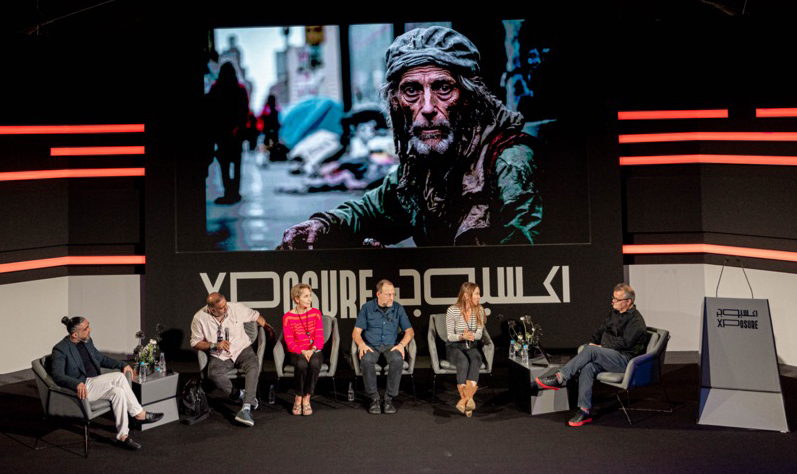The International Photography Festival is exhibiting more than 2,500 photographs of world renowned photojournalists, and alongside hosting talks and discussions on some of the most pressing issues of our times
- Santiago Lyon: We’re working with camera manufacturers to embed authenticity technology directly into devices. This means every image will carry metadata proving its source.
- Veronique de Viguerie: In some ways, social media has become a safeguard. If a false image is widely circulated, it will eventually be debunked. But that doesn’t undo the damage done in the meantime.
- Maria Mann: The burden falls on us as journalists. Ethics must be reinforced more than ever. Without it, our credibility collapses.
- Mohammed Muheisen: Journalism demands truth, while art allows interpretation. If AI is involved, it must be disclosed. It’s that simple.
For immediate release
Sharjah, February 23, 2025
The world of photojournalism stands at an inflection point. The rapid advancement of artificial intelligence, social media, and digital manipulation has blurred the once-clear lines between reality and fabrication. On Sunday, the International Photography Festival (Xposure) 2025 hosted the panel, ‘Challenging the Integrity of Truth’, with distinguished photojournalists and industry experts to debate the urgent question: How do we safeguard the integrity of visual storytelling in an age of misinformation?
Santiago Lyon, Head of Advocacy and Education for the Adobe-led Content Authenticity Initiative, noted, “We’re living in a time where we have zero empirical evidence about the origins of anything we consume online. Trust is based on habit, hearsay, or gossip.”
His work at Adobe focuses on embedding authenticity in digital files – what he calls a “digital nutrition label” – that will allow viewers to see the origins and any manipulations of an image.
The discussion underscored the urgent need for transparency, regulation, and education.
“The industry needs to establish clear distinctions: Are you a journalist or an artist?” questioned Mohammed Muheisen, a two-time Pulitzer Prize-winning photographer and National Geographic Explorer. “Journalism demands truth, while art allows interpretation. If AI is involved, it must be disclosed. It’s that simple.”
Veronique de Viguerie, an award-winning French photographer, agreed. “We must be relentless in maintaining ethical standards. It is no longer just about capturing reality—it’s about proving it. Transparency is our only hope.”
Manipulation is not new, but it’s faster than ever in the era of AI
Photo manipulation is not a recent phenomenon. Maria Mann, an American photojournalism consultant, noted the precarious role of editors, who have the power to alter captions, crop images, and frame narratives. “Bias can be subtle; a single edit can change the meaning of an image entirely.”
De Viguerie echoed this sentiment. “If we allow even minor manipulations, we open the door to more significant distortions.” Yet, she also recognised the role of social media in accountability. “In some ways, social media has become a safeguard. If a false image is widely circulated, it will eventually be debunked. But that doesn’t undo the damage done in the meantime”, she added.
Salim Amin, leader of Camerapix, raised concerns about preserving historical archives. “We have original negatives to verify authenticity, but once something goes digital, control is lost. What happens when an AI-generated image is mistaken for history?”
The takeaway was clear: Journalism must evolve to meet the challenges of the digital age. Truth remains the cornerstone of photojournalism – but in an era of artificial realities, proving what is real has never been more critical.

